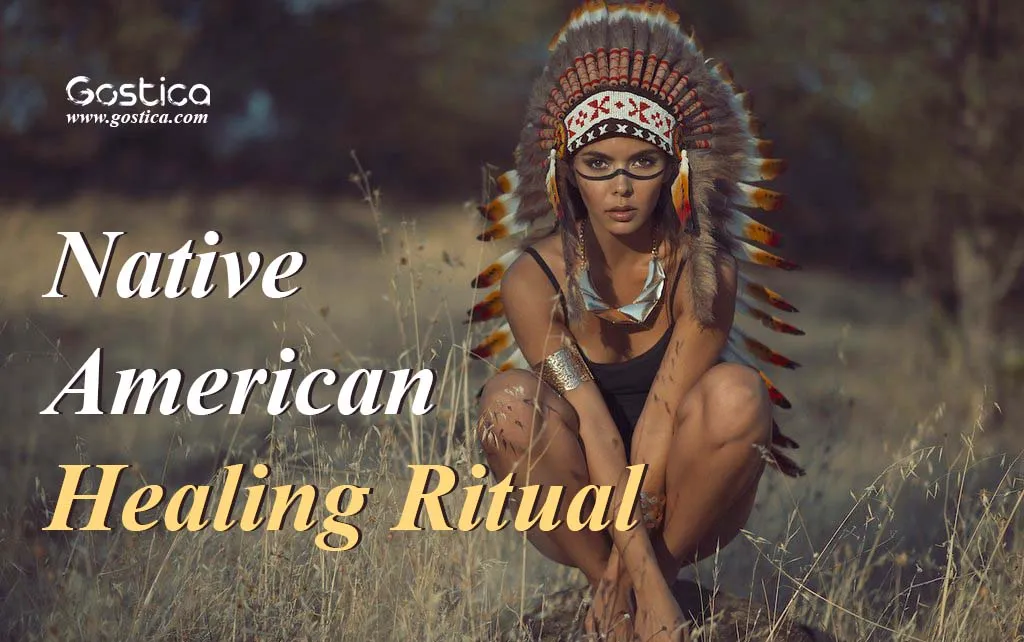Native American healing rituals are woven into the cultural fabric of indigenous communities, embodying centuries-old wisdom and traditions. These diverse practices encompass a wide array of ceremonies, from sweat lodges and smudging to vision quests and the use of medicinal herbs.
Each ritual carries unique significance and plays a vital role in the physical, mental, and spiritual well-being of Native individuals. Join 49native.com on a journey to uncover the profound forms of healing rituals deeply rooted in Native American heritage.
What is the indigenous method of healing?
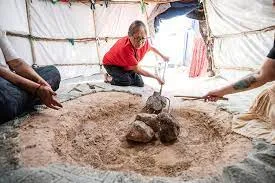
Indigenous and Traditional Healing: Bridging Worlds for Holistic Wellness
Exploring the Deep Connection between Indigenous and Traditional Healing in the Modern Context
In the heart of UC Santa Cruz, an acknowledgment resonates – that of the unceded territory of the Awaswas-speaking Uypi Tribe. Amid this acknowledgement, the Amah Mutsun Tribal Band emerges, descendants of those who bore witness to the Spanish colonization of the Central Coast.
Today, they toil diligently to restore their ancestral stewardship and heal the wounds of history. Indigenous and Traditional Healing form an integral part of their journey. While these terms are often intertwined, our exploration unveils the intricate relationships and subtleties between them.
Indigenous Healing: Cultivating Wisdom Across Continents
When we speak of Indigenous Healing, we encompass the wealth of healing wisdom nurtured by Indigenous, First Nations, and Native communities globally. It’s a tapestry woven from centuries of connection to the earth, spirit, and the legacy of ancestors.
Indigenous Healing embraces a holistic view of health, where the mind, body, and spirit are inseparable, and ecological well-being intertwines with the lives of all beings, both human and more-than-human.
Traditional Healing: A Global Spectrum of Wisdom
Traditional Healing reaches beyond geographical boundaries, encompassing the healing knowledge of diasporic, refugee, displaced, and historically oppressed populations. It’s the collective wisdom of communities that have faced adversity. Traditional Healing, like Indigenous Healing, echoes the importance of the interconnectedness of all life forms and the significance of ecological harmony.
The Interweaving Wisdom: Healing Body, Spirit, and Planet
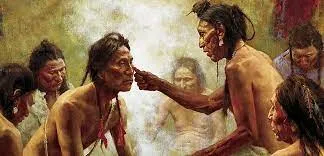
Indigenous and Traditional Healing offer profound insights that challenge the assumptions of Western medicine. They are rooted in relational cosmologies, philosophies of the universe that emphasize interconnectedness and balance. These systems of healing not only address the health of individuals but are deeply entwined with the well-being of the planet.
A Dynamic Path to Wellness
The knowledge of Indigenous and Traditional Healing is dynamic, ever-evolving to adapt to contemporary realities. These healing practices often coexist with Western biomedicine, offering individuals choices for their well-being. Yet, history has marred the pursuit of this wisdom, with colonialism and violence systematically suppressing these practices worldwide.
Navigating Modern Challenges: Climate Change and Healing
In the present, Indigenous and Traditional Healing must confront new adversaries – climate change and resource exploitation. The impacts of climate change compromise the very foundations of these healing practices, from the land and plants to water, animals, and the intricate relationships between them.
Researching, Fostering Care, and Honoring Community Wisdom
Interdisciplinary researchers delve into the practices, discourse, and histories of Indigenous and Traditional Healing. They collaborate with communities, acknowledging their wisdom, supporting their endeavors against climate change, resource exploitation, and the appropriation of their knowledge.
Solidarity in Research
Researchers aspire to practice solidarity, recognizing their role in supporting communities. They center community knowledge and address power dynamics, aiming to be in alignment with the communities they work alongside.
In this journey, we utilize the terminology “Traditional” and “Indigenous” as employed by the communities we engage with, understanding that diverse language is embraced in different contexts. As we navigate the past and present, our pursuit is to honor the legacies and forge new paths of well-being and healing.
What is the Native American ritual for protection?
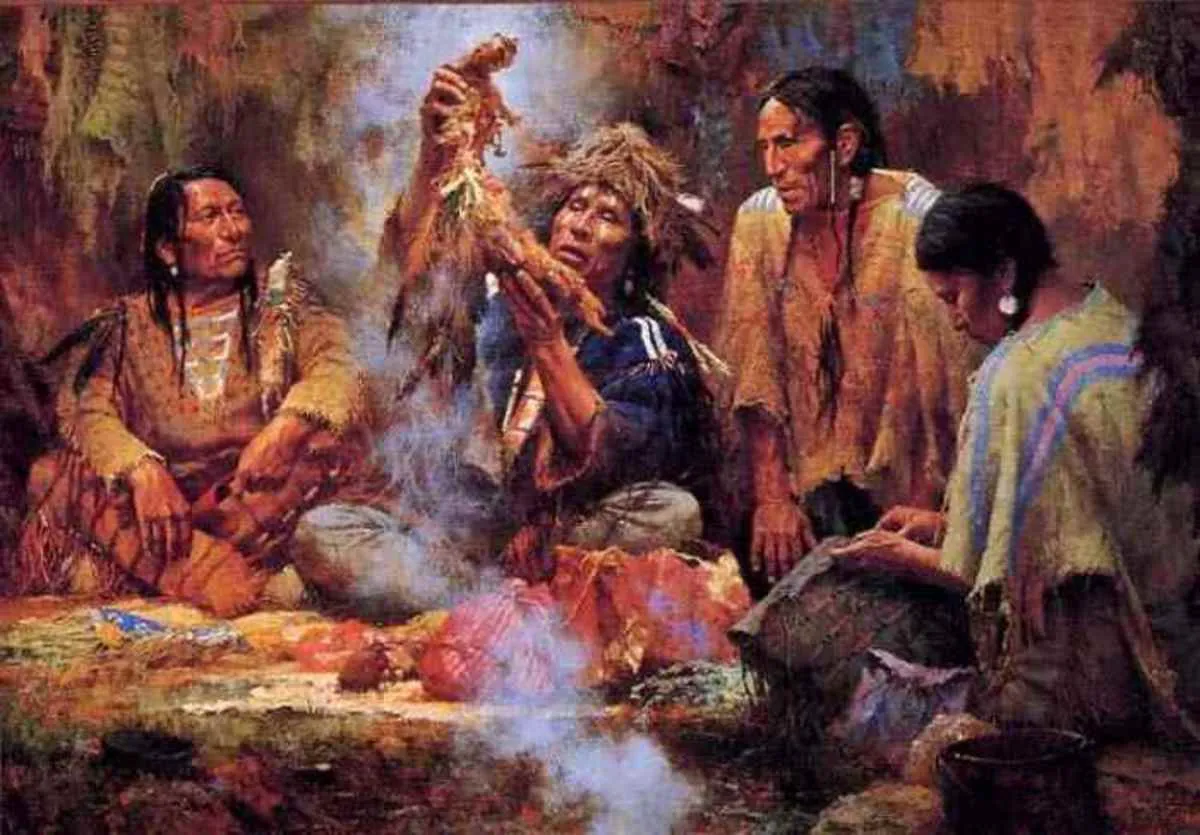
In the heart of ancient traditions, the concept of a vision quest stands as a remarkable testament to humanity’s profound connection with the spiritual realm. It’s a sacred journey undertaken by individuals who seek to engage with guardian spirits, often embodied as anthropomorphized animals, in the pursuit of guidance, protection, and insight.
A Tapestry of Indigenous Traditions
The tradition of vision quests finds its roots deeply intertwined with the native peoples of North and South America. These cultures, each unique and diverse, crafted their own distinctive approaches to this supernatural experience.
Guardian Spirits and Varied Techniques
Across tribes, the techniques for attaining visions displayed fascinating diversity. Every tribe had its distinct customs for conducting vision quests. The age at which one embarked on this profound journey, its duration, intensity, and the expected form of the guardian spirit’s presence or sign all varied significantly.
Rituals of Transition
In many tribes, vision quests marked the transition from childhood to adulthood. It was a rite of passage that held immense cultural significance. The experience was shared by the young members of the community, reinforcing their bond with ancestral traditions.
Diverse Participation and Roles
While some tribes opened the doors of vision questing to all, others limited it to males, reserving different rites of passage for females, such as menarche and childbirth. In certain South American groups, vision quests and interactions with guardian spirits were exclusively entrusted to shamans, religious figures renowned for their healing abilities and psychic transformations.
Preparation and Rituals
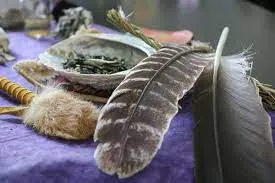
The initiation of a vision quest was not a hasty decision. It was often preceded by a period of preparation, guided by a religious specialist. This preparatory phase instilled a sense of reverence and understanding of the quest’s profound nature.
The Isolated Sojourn
The core of the vision quest entailed a period of solitude, typically in a remote location. During this period, the seeker would engage in intense prayer while abstaining from food and drink for several days. Some cultures enhanced their experience with the aid of hallucinogenic substances.
Signs and Visions
The manner in which a vision manifested was as varied as the tribes themselves. Some sought significant or unusual animal behavior, while others discovered objects, often stones, resembling particular animals. In the most common form, the quester received a dream—a vision—in which a spirit-being made its presence known.
The Return Home and Interpretation
Upon experiencing a vision, the quester would return to the community, seeking guidance to unravel the cryptic message. Interpretation was a crucial step in understanding the spiritual guidance offered during the quest.
The Unpredictable Nature of Visions
Not all vision quests yielded success. When a vision did not occur within a prescribed period, religious specialists often recommended individuals to abandon the attempt. The mystical world of vision quests held secrets that were not unveiled to everyone.
Vision quests stand as a testament to the rich tapestry of indigenous cultures and their profound connection with the spiritual realm. These journeys served as a bridge between the physical and metaphysical, a tradition that continues to captivate our imagination.
What is the Indian healing treatment?
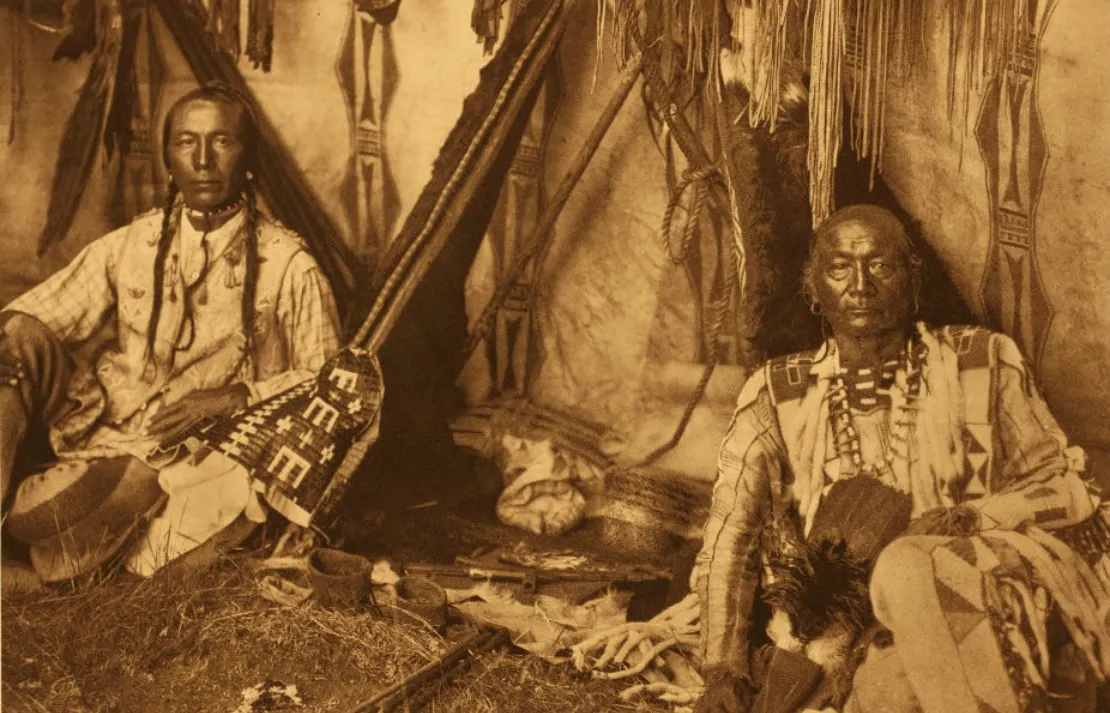
In the heart of India’s rich cultural tapestry, Ayurveda, an age-old system of medicine, has flourished for over 3,000 years. The term “Ayurveda” itself is a fusion of two Sanskrit words, “ayur” meaning life and “veda” signifying science or knowledge.
Hence, Ayurveda is often translated as the “knowledge of life.” At its core, Ayurveda is built on the profound belief that disease stems from imbalances and stress within an individual’s consciousness. To restore equilibrium between the body, mind, spirit, and the environment, Ayurveda advocates an array of lifestyle interventions and natural therapies.
The Ayurvedic Journey to Wellness
Ayurveda embarks on the path to healing through a meticulously structured process. It commences with an internal purification regimen, paving the way for a transformative journey. This is succeeded by the adoption of a special diet, the incorporation of herbal remedies, therapeutic massages, yoga, and meditation practices. Each of these elements contributes harmoniously to the pursuit of holistic health.
The Pillars of Ayurvedic Wisdom
Ayurveda hinges on three fundamental pillars: universal interconnectedness, the individual’s constitution (prakriti), and the life forces within (doshas). These cornerstones underpin the entire edifice of Ayurvedic medicine, offering a holistic approach to healing.
The primary objectives of Ayurvedic treatment encompass eliminating impurities, mitigating symptoms, bolstering resistance against diseases, alleviating distress, and fostering harmony in life. A distinctive feature of Ayurveda is the extensive use of herbs, plants, oils, and common spices in the therapeutic process.
Ayurveda in India: A Recognized Form of Healthcare
In India, Ayurveda holds an esteemed place in the realm of healthcare. It stands as an equivalent to conventional Western medicine, traditional Chinese medicine, naturopathic medicine, and homeopathic medicine. Ayurvedic practitioners in India undergo formal training and are recognized by the state. They operate within an institutionalized framework of knowledge and practice.
Ayurveda in the United States: An Evolving Landscape
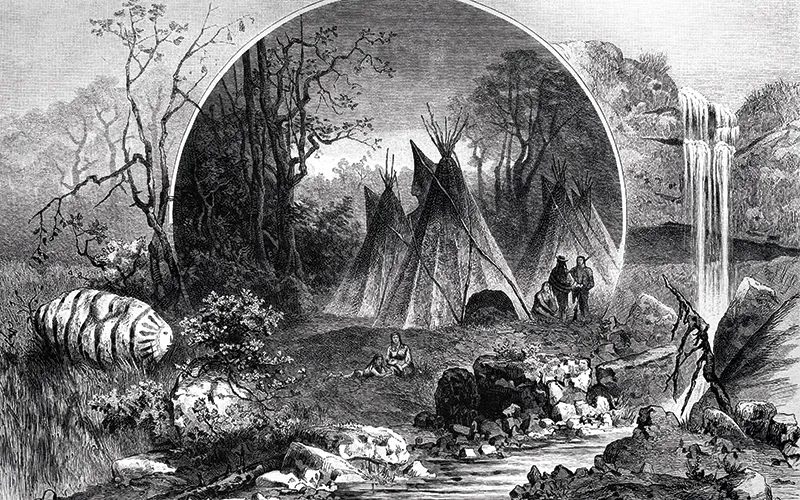
In contrast, the United States does not have a national standard for Ayurvedic training or certification. While Ayurvedic practitioners in the U.S. are not licensed, several states have granted approval to Ayurvedic schools as educational institutions.
This evolving landscape brings Ayurveda into the fold of complementary and alternative medicine, offering a holistic approach to wellness in conjunction with conventional medical care.
Navigating Uncharted Waters: Safety and Research
Ayurvedic medicines incorporate an array of materials, including herbs, metals, minerals, and other substances. These materials, while integral to Ayurveda, should be handled with care and precision.
Improper use or administration without the guidance of a trained practitioner can potentially lead to harm. Ayurvedic remedies are categorized as dietary supplements rather than drugs in the U.S. Consequently, they are not subject to the same rigorous safety and efficacy standards applied to conventional medicines.
The Power of Ayurveda in Complementing Medical Care
Ayurveda can indeed offer positive effects when employed as a complementary therapy alongside conventional medical care. The holistic approach of Ayurveda aligns with a broader perspective on health and well-being. However, Ayurveda should not be considered a sole replacement for standard medical care, particularly when addressing severe medical conditions.
A Collaborative Journey to Health
To harness the potential of Ayurveda, it is crucial to discuss any Ayurvedic treatments with your healthcare provider. This is especially important for pregnant or nursing women, as well as individuals considering Ayurvedic therapy for children.
Ayurveda should complement, rather than substitute, conventional medical care. Thus, any diagnosis of a disease or condition should be made by a healthcare provider with substantial training and experience in mainstream medicine. Ayurveda weaves a tapestry of ancient wisdom, offering a holistic path to health, wellness, and balance
Read more: What Is The Date Of Native American Heritage Day 2023?
What symbolizes healing in Native American culture?
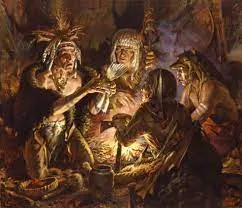
In the heart of Native American culture, the Medicine Wheel, often referred to as “the sacred hoop,” emerges as a powerful symbol of healing and well-being. This revered emblem takes on various forms, appearing not only in paintings and artifacts but also as physical constructs on the land, exemplified by the remarkable installation in the Bighorn National Forest of Lovell, Wyoming.
The Medicine Wheel is characterized by a cross that demarcates the four cardinal directions: North, South, East, and West. Its circular design signifies the cyclic and interconnected nature of our world.
Guiding Principles: Morals of Hard Work and Self-Improvement
At its essence, the Medicine Wheel operates as a compass for Native Americans, offering guidance for living a life steeped in values of hard work and self-improvement. While its role as a moral guide is well-established, the Medicine Wheel’s potential ceremonial and ritual significance remains enigmatic.
Clues to its multifaceted purpose are found in the presence of ancient dances performed within these sacred circles. Nevertheless, the full extent of its significance continues to be shrouded in mystery, as no written records exist to definitively unveil its purpose.
A Symbol of Cultural Unity and Connection
While the Medicine Wheel is an integral part of Native American traditions today, its meaning and significance have not been widely shared with non-Native communities. Intriguingly, this symbol of unity and healing transcends cultural boundaries.
Many of the core beliefs embedded in the Medicine Wheel resonate with African-American communities in New York, fostering connections and shared values that have allowed both ethnicities to build communities grounded in similar principles.
Honoring the Past: African Burial Ground and Native American History
Furthermore, the Medicine Wheel serves as a bridge between the cultural and historical tapestries of Native Americans and African-Americans. This connection is exemplified in the placement of this powerful symbol at the African Burial Ground, a location of immense significance for both communities.
The presence of the Medicine Wheel within this monument is a testament to the enduring link between the cultures and histories of Native Americans and African-Americans, honoring the shared values and experiences that have defined their journeys.
The Medicine Wheel, an emblem of healing and unity, continues to beckon us to explore its deeper meanings and the untold stories it holds within its sacred circle.

